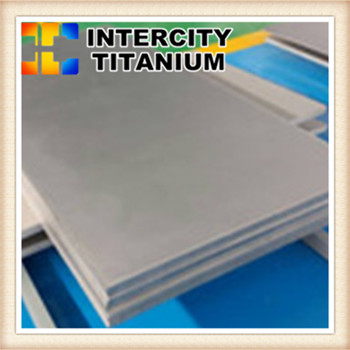Titanium plate surface defect treatment
With the development of economy and technology, more and more applications of titanium plate appearance, but the corresponding surface quality problems appear more prominent.
Titanium plate surfaces defects with conventional defects and unconventional defects in two broad categories. General defects are:
1, scratch
Reason: guide plate, roller, tools and rollers are not smooth, with sticky or angular burrs, rolling scratch the surface; not careful when operating, so that the collision with each other to constitute a scratch surface.
Measures: Before rolling to check excellent tools, guides, roller and roll, etc., found that the problem cleared in time; careful operation, do not pull the chaos.
2, metal insert
The reason: rolling edge burr and tail dregs is pressed into the product surface.
Measures: promptly remove the edge of the bar burr and surface foreign body. Rift, cracked head cut off in time.
3, non-metallic press-in
Reason: poor sanitation, dust distant objects fall on the surface of the rolling; after pickling, the cleaning is not clean.
Measures: Improve hygiene, timely removal of rolling surface adhesion.
4, Ma Hang pitting
Reasons: Pressure orthopedic annealing, platen or pad surface dust foreign body.
Measures: promptly remove the platen and pad surface before entering the furnace.
5, roll marks
Reason: Roller wear a serious surface, pits, Ma face, scratches, etc.; roll surface is pressed out of pits angle.
Measures: Found roll marks, grinding or replacement roll.
Unconventional defects are:
1, cracked
Reasons: Unqualified incoming material, unclear surface crack or unclear getter layer on the incoming material surface, unreasonable pressing procedure, small pass processing rate, too many pass or unequal distribution of pass rate.
Measures: Strict control of inbound surface quality, reasonable allocation of pass processing rate to ensure uniform slab annealing temperature, enhanced rolling lubrication.
2, acid spots
Reasons: One is pickling. Acid residue is not rinsed, drying plate formation. One is the sheet annealing in the stack, the surface uneven oxidation, pickling surface corrosion brought about by inconsistencies.
Measures: pickling must be clean, to ensure no residual acid plate surface and then drying; reduce the stack thickness to ensure uniform sheet annealing; can also be used for sanding, to post-salvage treatment.









